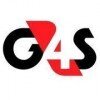Filter interviews by
Transguard Group Interview Questions and Answers
15 Interview questions
I have over 10 years of experience as an electrician, specializing in residential and commercial electrical systems.
Worked for 5 years at ABC Electrical Services, focusing on residential wiring and installations.
Spent 3 years at XYZ Commercial Electric, handling large-scale electrical projects.
Certified in NEC code compliance and safety standards, ensuring all work meets regulations.
Experience with troubleshooting...
Soundrater in an air conditioner is a device used to measure the sound level produced by the unit.
Soundrater is typically installed in air conditioners to ensure that the noise level produced by the unit is within acceptable limits.
It helps in determining if the air conditioner is operating quietly and efficiently.
Soundrater readings are important for maintaining a comfortable indoor environment and complying with...
Fire dampers are installed in HVAC ducting to prevent the spread of fire and smoke throughout a building.
Fire dampers are installed in HVAC ducting to prevent the spread of fire and smoke in case of a fire emergency.
They are typically installed in ductwork that penetrates fire-rated walls, floors, or ceilings.
Fire dampers are designed to close automatically when they detect high temperatures, preventing the spread...
Tools needed for marking diffuser and grill include tape measure, pencil, level, and masking tape.
Tape measure is essential for measuring the correct dimensions for marking.
Pencil is used for marking the locations on the ducting.
Level ensures that the markings are straight and aligned properly.
Masking tape can be used to temporarily secure the diffuser or grill in place while marking.
The duct line of supply air, fresh air, return air, and exhaust air can be identified in the drawing based on specific symbols and labels.
Supply air ducts typically have a fan symbol and are labeled as 'SA' or 'Supply Air'.
Fresh air ducts may have an intake symbol and are labeled as 'FA' or 'Fresh Air'.
Return air ducts often have a grille symbol and are labeled as 'RA' or 'Return Air'.
Exhaust air ducts can be iden...
Chlorine is a chemical element with the symbol Cl and atomic number 17. It is a yellow-green gas at room temperature.
Chlorine is a highly reactive element.
It is commonly used as a disinfectant and bleaching agent.
Chlorine is an essential component in the production of PVC.
It can be found in table salt (sodium chloride).
Different types of pipes and fittings are used in plumbing work.
Copper pipes and fittings are commonly used for water supply lines.
PVC pipes and fittings are used for drainage and waste systems.
PEX pipes and fittings are popular for both water supply and heating systems.
Galvanized steel pipes and fittings are used for water supply lines in older buildings.
Brass pipes and fittings are often used for valves and fauc...
A transfer pump is a device used to move fluids from one location to another.
Transfer pumps are commonly used in plumbing to move water or other liquids.
They can be powered by electricity, gasoline, or manual operation.
Transfer pumps are often used in situations where there is a need to drain or transfer large volumes of liquid, such as emptying a pool or transferring fuel.
Examples of transfer pumps include submer...
A booster pump is a device used to increase the pressure and flow rate of a fluid.
It is commonly used in plumbing systems to enhance water pressure in buildings.
Booster pumps are often installed in areas with low water pressure, such as high-rise buildings or remote locations.
They can be electrically powered or driven by an engine.
Booster pumps can be used for various applications, including irrigation systems, fi...
The slope of a SP line refers to the steepness or incline of the line.
The slope is a measure of how much the line rises or falls as it moves horizontally.
It can be positive, negative, or zero depending on the direction of the line.
A positive slope indicates an upward incline, while a negative slope indicates a downward incline.
A slope of zero means the line is horizontal.
The slope can be calculated by finding the ...
Transguard Group Interview Experiences
15 interviews found
I appeared for an interview in Apr 2025, where I was asked the following questions.
- Q1. Yes tell me
- Q2. Eaxpireance how may year
- Ans.
I have over 10 years of experience as an electrician, specializing in residential and commercial electrical systems.
Worked for 5 years at ABC Electrical Services, focusing on residential wiring and installations.
Spent 3 years at XYZ Commercial Electric, handling large-scale electrical projects.
Certified in NEC code compliance and safety standards, ensuring all work meets regulations.
Experience with troubleshooting and ...
Interview Preparation Tips
I applied via Walk-in and was interviewed in Oct 2023. There were 2 interview rounds.

(6 Questions)
- Q1. What is this booster pump?
- Ans.
A booster pump is a device used to increase the pressure and flow rate of a fluid.
It is commonly used in plumbing systems to enhance water pressure in buildings.
Booster pumps are often installed in areas with low water pressure, such as high-rise buildings or remote locations.
They can be electrically powered or driven by an engine.
Booster pumps can be used for various applications, including irrigation systems, firefig...
- Q2. What is this transfer pump?
- Ans.
A transfer pump is a device used to move fluids from one location to another.
Transfer pumps are commonly used in plumbing to move water or other liquids.
They can be powered by electricity, gasoline, or manual operation.
Transfer pumps are often used in situations where there is a need to drain or transfer large volumes of liquid, such as emptying a pool or transferring fuel.
Examples of transfer pumps include submersible...
- Q3. Which type of Pipe and fittings in plumbing work?
- Ans.
Different types of pipes and fittings are used in plumbing work.
Copper pipes and fittings are commonly used for water supply lines.
PVC pipes and fittings are used for drainage and waste systems.
PEX pipes and fittings are popular for both water supply and heating systems.
Galvanized steel pipes and fittings are used for water supply lines in older buildings.
Brass pipes and fittings are often used for valves and faucets.
C...
- Q4. What is clorine?
- Ans.
Chlorine is a chemical element with the symbol Cl and atomic number 17. It is a yellow-green gas at room temperature.
Chlorine is a highly reactive element.
It is commonly used as a disinfectant and bleaching agent.
Chlorine is an essential component in the production of PVC.
It can be found in table salt (sodium chloride).
- Q5. What should be the PH in water?
- Ans.
The ideal pH of water should be around 7, which is considered neutral.
The pH scale ranges from 0 to 14, with 7 being neutral.
Water with a pH below 7 is considered acidic, while water with a pH above 7 is considered alkaline.
Different uses of water may require different pH levels. For example, drinking water should ideally have a pH between 6.5 and 8.5.
pH levels in water can be influenced by various factors such as mine...
- Q6. What is the slope of a SP line
- Ans.
The slope of a SP line refers to the steepness or incline of the line.
The slope is a measure of how much the line rises or falls as it moves horizontally.
It can be positive, negative, or zero depending on the direction of the line.
A positive slope indicates an upward incline, while a negative slope indicates a downward incline.
A slope of zero means the line is horizontal.
The slope can be calculated by finding the chang...
I applied via Recruitment Consulltant and was interviewed in Jan 2024. There were 2 interview rounds.
Essay test,filling the questions
(2 Questions)
- Q1. Work experience
- Q2. Work relation with coworkers
- Ans.
I maintain positive relationships with coworkers through communication, teamwork, and mutual respect, ensuring a safe work environment.
Open communication: I regularly check in with coworkers to discuss any concerns or updates regarding security protocols.
Teamwork: During shifts, I collaborate with colleagues to monitor areas effectively, sharing responsibilities to enhance safety.
Respect and support: I always acknowled...
Interview Preparation Tips
I applied via Referral and was interviewed in Sep 2023. There were 3 interview rounds.

English test where we have to face basic grammar test and a paragraph writing
(1 Question)
- Q1. He asked me whether you will able to work there or not
I applied via Naukri.com and was interviewed in Nov 2022. There were 2 interview rounds.

(4 Questions)
- Q1. Electrician 5Year experience
- Q2. And plumber 4yaer experience
- Q3. Electrician 5 Yarr experience
- Q4. Palambar 5 yaer experience
- Ans.
Yes, I have 5 years of experience as a palambar electrician.
During my 5 years of experience, I have gained expertise in installing and maintaining electrical systems in buildings and homes.
I have also worked on troubleshooting and repairing electrical issues.
I am familiar with safety protocols and regulations related to electrical work.
I have worked with a variety of tools and equipment, including multimeters, wire str...
Interview Preparation Tips
I applied via Walk-in and was interviewed before Jul 2023. There were 2 interview rounds.
Impact of information technology in the community
We discussed on how to remove stain from linen
Interview Preparation Tips
To keep time in everything and be patient
To know the qualities of the position they are applying for
I applied via Approached by Company and was interviewed before Sep 2023. There was 1 interview round.
(6 Questions)
- Q1. What is Soundrater in the air conditioner and why is it installed?!
- Ans.
Soundrater in an air conditioner is a device used to measure the sound level produced by the unit.
Soundrater is typically installed in air conditioners to ensure that the noise level produced by the unit is within acceptable limits.
It helps in determining if the air conditioner is operating quietly and efficiently.
Soundrater readings are important for maintaining a comfortable indoor environment and complying with nois...
- Q2. Why and where is the firedamper installed?!
- Ans.
Fire dampers are installed in HVAC ducting to prevent the spread of fire and smoke throughout a building.
Fire dampers are installed in HVAC ducting to prevent the spread of fire and smoke in case of a fire emergency.
They are typically installed in ductwork that penetrates fire-rated walls, floors, or ceilings.
Fire dampers are designed to close automatically when they detect high temperatures, preventing the spread of f...
- Q3. Tell me in the drawing where is the duct line of supply air, fresh air, return air, exhaust air?!
- Ans.
The duct line of supply air, fresh air, return air, and exhaust air can be identified in the drawing based on specific symbols and labels.
Supply air ducts typically have a fan symbol and are labeled as 'SA' or 'Supply Air'.
Fresh air ducts may have an intake symbol and are labeled as 'FA' or 'Fresh Air'.
Return air ducts often have a grille symbol and are labeled as 'RA' or 'Return Air'.
Exhaust air ducts can be identifie...
- Q4. What tools will be needed for marking diffuser and grill?!
- Ans.
Tools needed for marking diffuser and grill include tape measure, pencil, level, and masking tape.
Tape measure is essential for measuring the correct dimensions for marking.
Pencil is used for marking the locations on the ducting.
Level ensures that the markings are straight and aligned properly.
Masking tape can be used to temporarily secure the diffuser or grill in place while marking.
- Q5. What is the full form of vcd and why is vcd installed?!
- Ans.
VCD stands for Volume Control Damper and is installed in HVAC ducting systems to regulate airflow and control the volume of air passing through.
VCD is used to control the flow of air in HVAC systems by adjusting the damper blade position.
It helps in balancing the airflow in different areas of a building to ensure proper ventilation and comfort.
VCDs can be manually operated or motorized, depending on the specific requir...
- Q6. What tools are used in HVAC ductwork? What is their name?
- Ans.
Various tools are used in HVAC ductwork, including snips, seamers, hammers, drills, screwdrivers, tape measures, and levels.
Snips - used for cutting sheet metal
Seamers - used for bending and folding metal edges
Hammers - used for securing ductwork
Drills - used for making holes for fasteners
Screwdrivers - used for tightening screws
Tape measures - used for measuring duct lengths
Levels - used for ensuring ductwork is insta...
Interview Preparation Tips
You must have minimum 3 years of experience in the field in which you are going to give an interview, and you must know the names of all the equipment and tools of your field.
I appeared for an interview before Jan 2024.
(2 Questions)
- Q1. Why did you come to Dubai?
- Ans.
I came to Dubai for better career opportunities and to experience a new culture.
Seeking career growth in a thriving market
Exploring new cultural experiences
Opportunity to work in a diverse environment
- Q2. What are your reasons for working at Transguard?
- Ans.
I am passionate about maintaining cleanliness and organization in a professional kitchen environment.
I have a strong work ethic and take pride in ensuring the kitchen is clean and organized at all times.
I enjoy working as part of a team to support the overall success of the kitchen operations.
I am excited about the opportunity to grow and develop my skills in a reputable company like Transguard.
Interview Preparation Tips
I applied via Recruitment Consulltant and was interviewed before Oct 2022. There were 2 interview rounds.

(5 Questions)
- Q1. Talk about yourself
- Ans. Am Micheal from Uganda , Aged 31 years .Am a father to 3kids and am looking forward to provide them a better future ahead ,its the reason am seeking A Job and looking forward to work with you.
- Q2. Are you willing to work any where in the UAE
- Ans.
Yes, I am open to working anywhere in the UAE, embracing new opportunities and experiences.
Flexibility: I understand that the role may require working in different locations across the UAE.
Adaptability: I am willing to adjust to various environments, whether it's in a busy airport or a remote site.
Cultural Exposure: Working in different areas allows me to experience the diverse culture of the UAE.
Career Growth: Being o...
- Q3. Are you willing to indoor or outdoor because UAE sometimes has harsh seasons?
- Ans. Yes Am willing to work both indoor and outdoor as assigned too.
- Q4. Are you willing to wear any Uniform provided by the company or not?
- Q5. Yes, Am willing to wear the company uniform provided by my superiors
Interview Preparation Tips

(2 Questions)
- Q1. Tell me about my self
- Q2. Tell me about work experience
Interview Preparation Tips
Okay okay okay okay okay okay okay okay
Top trending discussions






Transguard Group Interview FAQs
The duration of Transguard Group interview process can vary, but typically it takes about less than 2 weeks to complete.
Tell us how to improve this page.
Transguard Group Interviews By Designations
- Transguard Group Security Guard Interview Questions
- Transguard Group Plumber Interview Questions
- Transguard Group Electrician Specialist Interview Questions
- Transguard Group Cargo Loader Interview Questions
- Transguard Group ARC Welder Interview Questions
- Transguard Group Process Associate Interview Questions
- Transguard Group Electrician Interview Questions
- Transguard Group Kitchen Steward Interview Questions
- Show more
Interview Questions for Popular Designations
Overall Interview Experience Rating
based on 21 interview experiences
Difficulty level
Duration
Interview Questions from Similar Companies
Transguard Group Reviews and Ratings
based on 332 reviews
Rating in categories
|
Security Guard
21
salaries
| ₹3.8 L/yr - ₹7.4 L/yr |
|
Security Officer
21
salaries
| ₹4 L/yr - ₹7.5 L/yr |
|
Security Supervisor
7
salaries
| ₹5.8 L/yr - ₹7.5 L/yr |
|
Cash Custodian
6
salaries
| ₹4 L/yr - ₹7 L/yr |
|
Cctv Operator
5
salaries
| ₹4.1 L/yr - ₹7 L/yr |

G4S

Security and Intelligence Services (India)

Border Security Force

Central Industrial Security Force
- Home >
- Interviews >
- Transguard Group Interview Questions













